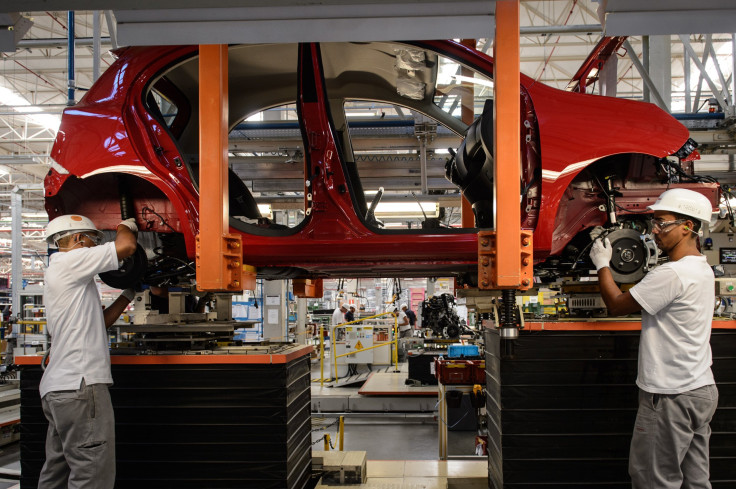China GDP: IMF Says Emerging Markets Face ‘Great Challenges’ As Outlook Hinges on Beijing’s Ability To Manage Slower Growth

The International Monetary Fund dubbed 2016 a “year of great challenges” for emerging markets in its new World Economic Outlook Tuesday. Another message of the twice-yearly document: No investor anywhere in the world can be sure that China, Brazil, Russia and other big economies will rise to those challenges.
During the boom years in China, other emerging markets invested heavily in commodity production, raw materials exports and other industries that turned on the Middle Kingdom’s prosperity. Now they have to restructure, pay off debts and find a path to more sustainable growth.
“There is uncertainty about the bumpiness of that ride,” said Maury Obstfeld, chief economist at the IMF. “This could be a bumpy transition.”
The IMF now estimates global growth will be about 3.1 percent in 2016, slightly lower than what it projected six months ago. Its warning of what could happen was pointed, however: China’s macroeconomic management, low commodity prices and the slow tightening of monetary policy in the United States are all wild cards. “If these key challenges are not successfully managed,” the IMF wrote, “global growth could be derailed.”
These challenges involve implementing long-term changes that don’t stifle demand now, and let the world fall into deflation. With China slowing, and emerging markets like Brazil and Russia in recession — and facing severe political and geopolitical problems in resuming growth — it’s not clear where overall demand will come from.
“Looking throughout the world, there’s a serious concern about deflationary pressures that go beyond the fall in commodity prices,” Obstfeld said. “So we have to be vigilant and not fall into a deflationary trap.”
The Chinese government is aiming for about 7 percent growth, and it more or less hit that target in the final quarter of 2015, according to data released today, which showed 6.8 percent growth. The IMF doesn’t believe the 7 percent growth target is realistic for this year, though. It projects growth of 6.3 percent in 2016, and 6 percent in 2017.
The debate over China’s prospects involves determining exactly how bumpy a transition it will face as it moves away from an export-led manufacturing economy to one driven by private consumption and services.
Nicholas Lardy, a China expert at the Peterson Institute for International Economics, belongs to the more optimistic group. Analyzing the third-quarter numbers, when China grew at 6.9 percent, Lardy observed that the services industry — entertainment, travel, education — had already picked up slack from manufacturing.
“Put another way, if the service sector had slowed proportionately with industry, China’s current pace of expansion would be about 4 percent,” Lardy wrote on his blog.
Stephen Jen, the founder of SLM Macro Partners, a research firm and hedge fund, argues that this evolution, which probably continued into this year, ensures that China won’t slide into a free-fall.
“For the global economy, China has clearly become a ‘second sun’ in our Solar System,” Jen wrote in a research note. “As long as the service sector in China continues to generate jobs, at a sufficient pace to offset the retrenchment in the industrial sector, China should be able to cope with this transition.”
The less sanguine view holds that Beijing doesn’t have the political will to finally break the power of state-run companies — in steel, shipbuilding and other heavy industries — that borrowed to expand during China’s debt-fueled growth.
“These highly indebted businesses, few of which deserve to be kept afloat, are draining funds away from healthy, generally private businesses,” Joerg Kraemer, chief economist at Germany’s Commerzbank, wrote in a research note. “This ‘zombification’ will weaken China’s economy for years.”
The political question of Beijing’s intentions can’t be answered now, in a month or even in a year.
The People’s Daily, an official newspaper of the Chinese Communist Party, recently offered some hints from someone identified as a policy insider. This person emphasized the need for structural reforms that shrink production capacity, unload inventory and shed debts, and suggested that President Xi Jinping is prepared to endure some social turmoil to achieve these goals.
“Turbulence cannot be entirely avoided, but it is worthwhile turbulence,” this person told the newspaper. “If China does not push for reform today, it could face more serious repercussions in the future.”
© Copyright IBTimes 2025. All rights reserved.





















